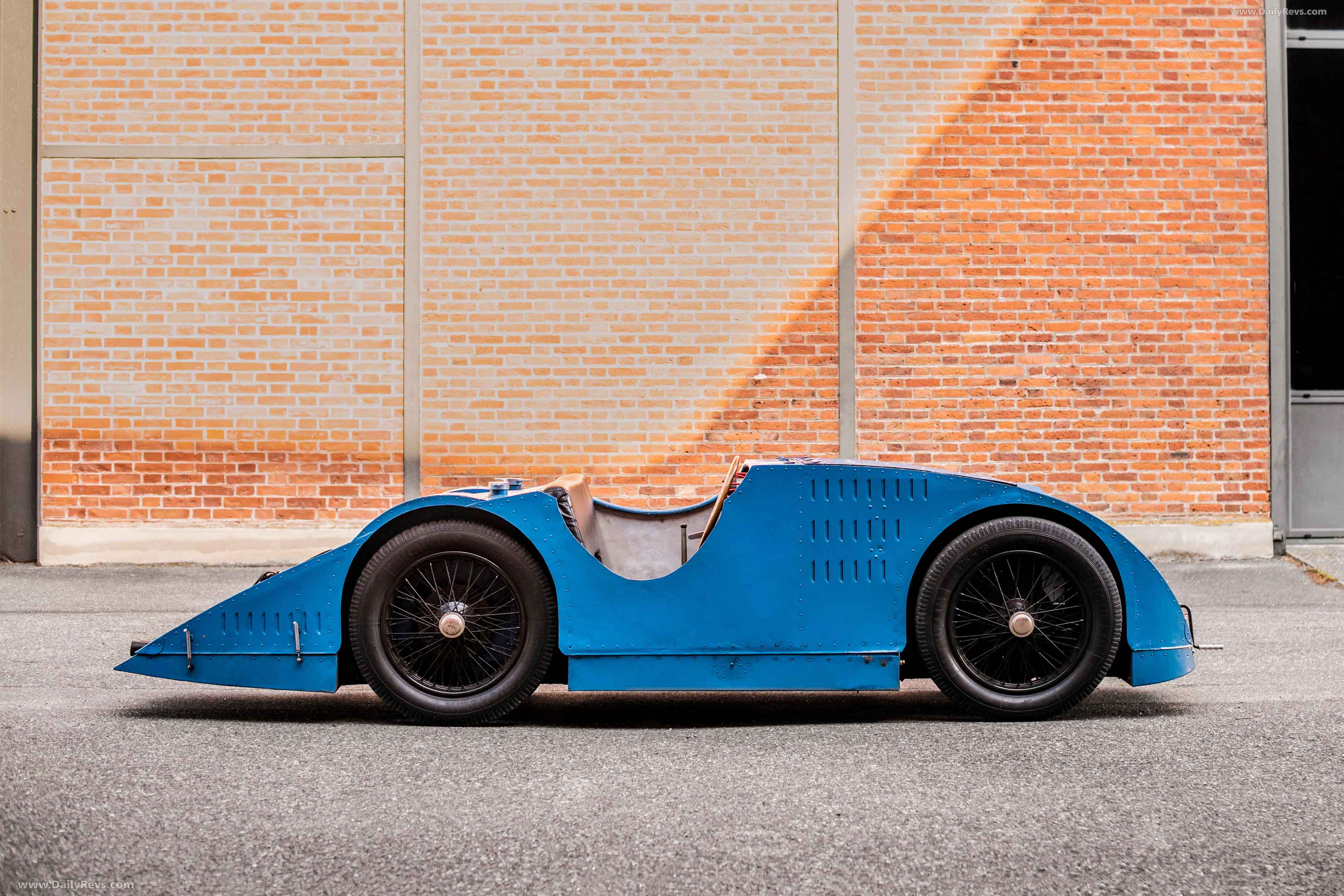1923 Bugatti Type 32 Tank
About the Car
1923 Bugatti Type 32 Tank
- Celebrating 100 Years of Racing Excellence: The 1923 Bugatti Type 32 Tank
- Bugatti's Visionary Design: The Aerodynamic Revolution in Motorsports
- Unconventional Yet Striking: The Wing-Shaped Body of the Type 32 Tank
- Engineering Marvels: Underslung Chassis and Front Hydraulic Brakes
- Unforgettable Racing Debut: The French Grand Prix of 1923
- Ettore Bugatti's Pursuit of Innovation: Defying Convention for Performance
- A Short but Impactful Career: Insights from the Type 32's GP Appearance
- Lessons Learned: The Type 32's Influence on Bugatti's Advancements
- From Type 32 to the Legendary Type 35: Bugatti's Legacy of Success
- Timeless Icon: The Bugatti Type 32 Tank's Enduring Legacy and Historic Action
Bugatti: Pioneering Innovation and the Iconic Type 32 Tank
Bugatti, renowned worldwide for its visionary engineering and ingenious designs, proudly commemorates the official centenary of the racing debut of one of its most groundbreaking cars: the 1923 Bugatti Type 32 'Tank.' This remarkable streamlined racing car not only revolutionized aerodynamic motorsport innovations but also captured attention with its distinctive rivets and bolts, earning it the well-deserved nickname 'Tank.'
A Legendary Racing Event: French Grand Prix of 1923
On the 2nd of July 1923, the charming city of Tours in the scenic Loire Valley played host to the French Grand Prix. The event drew an astounding crowd of 300,000 spectators, eager to witness the thrill of cutting-edge race cars in action. Among the impressive lineup, it was the audacious Bugatti machine that stole the spotlight—a testament to the genius of Ettore Bugatti and his relentless pursuit of defying convention in search of improvement.
Aerodynamic Ingenuity: The Striking Design of the Type 32
The Bugatti Type 32 immediately caught the eye with its airplane-inspired wing-shaped body, reflecting Bugatti's firm belief in the critical role of advanced aerodynamics in optimizing racing car performance. While its underlying structure shared similarities with the Type 30, featuring a 2.0-liter eight-cylinder engine producing approximately 90 PS, the unique fairing, compact wheelbase, and narrow track set it apart from its contemporaries, generating a stir of excitement among enthusiastic onlookers.
Engineering Marvels and Unconventional Features
The Type 32 boasted several innovative engineering solutions, techniques, and designs. Notably, it featured an underslung chassis and front hydraulic brakes, along with a three-speed and reverse transaxle transmission, adding to the thrill and adventure of driving this unorthodox racing car. Its dramatic and idiosyncratic appearance commanded attention, contrasting against the commonly employed design norms prevalent during the era.
The Race and Lasting Impact
In total, Bugatti built five Type 32s, including a prototype and the four cars that participated in the French Grand Prix. The race comprised a grueling 35 laps on a 22.83-kilometer circuit encompassing public roads, covering a total distance of nearly 800 kilometers. Of the four cars, the most successful was expertly driven by French racer Ernest Friderich, who secured a commendable third-place finish. Completing the race in seven hours and 22.4 seconds, he achieved an average speed of over 112 km/h.
Transition to a New Era: Legacy and Further Advancements
Despite its relatively short stint in Grand Prix racing, the Type 32 proved instrumental in shaping Bugatti's future endeavors. The invaluable lessons learned paved the way for significant advancements. Notably, the belief in the paramount importance of aerodynamic efficiency was solidified and conclusively proven in another Bugatti race car—the illustrious 57G. Embodying the streamlined, enclosed body that earned it the revered 'Tank' designation, the 57G dominated endurance racing throughout the 1930s, triumphing in the 1936 French Grand Prix and, notably, the legendary Le Mans race in 1937. These achievements validated Ettore Bugatti's visionary aspirations, first materialized in the 1923 Type 32 'Tank.'
A Timeless Icon and Continuing Legacy
Even today, the Bugatti Type 32 remains an instantly recognizable masterpiece among motorsport enthusiasts. This remarkable creation is preserved at the Musée National de l'Automobile in Mulhouse, France, where it serves as a testament to the enduring legacy of Bugatti's innovation. Furthermore, it continues to participate in action-packed historic races, showcasing its timeless appeal and reminding audiences of the remarkable image gallery featured above.









